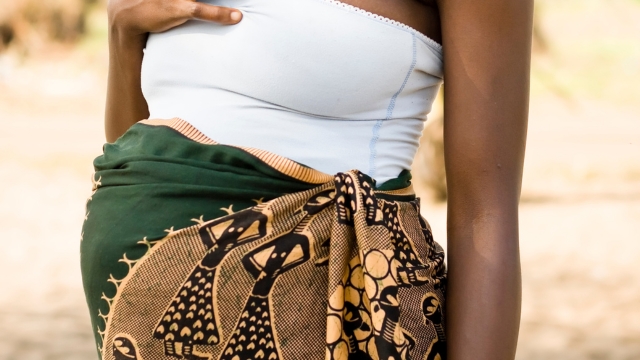Teen pregnancy remains a major public health and social issue across sub-Saharan Africa, with over 14 million adolescent girls aged 15–19 becoming mothers each year on the continent, according to the WHO.
However, the results of prevention efforts vary widely depending on how programs are structured, whether they include girls’ voices, and how well they fit into local social and cultural contexts.
The most successful approaches are those that combine sexuality education, empowerment, family involvement, and community buy-in. In contrast, abstinence-only models, one-size-fits-all messaging, and programs with poor community integration consistently underperform.
Root Causes of Teen Pregnancy in Africa
Category
Key Factors
Economic
Poverty, low school retention, and lack of job options
Cultural
Early marriage, low autonomy for girls, and community pressure
Individual
Poor access to information, myths about contraception, and low self-efficacy
Systemic
Lack of adolescent-friendly clinics, stockouts, stigma, and weak policy enforcement
What Works: Effective Interventions With Evidence
1. Comprehensive Sexuality Education (CSE)
Programs that provide accurate, age-appropriate sexual and reproductive health education in schools are strongly linked to better outcomes.
In Ghana, implementation of a structured CSE curriculum across several secondary schools led to a 40% increase in contraceptive knowledge and a decline in self-reported pregnancy cases among adolescent girls (UNESCO, 2020).
In Kenya, a randomized evaluation by the World Bank in 2022 showed a 28% reduction in teen pregnancies when sex education was combined with facilitated community discussions and gender-based curriculum additions.
CSE programs go beyond biological explanations. They include discussions on consent, healthy relationships, contraception methods, gender roles, and power dynamics. These aspects make CSE more effective than traditional reproductive biology lessons alone.
2. Girls’ Empowerment and Life Skills Training
Programs that equip girls with vocational skills, financial literacy, and reproductive health knowledge give them greater autonomy and agency.
In Uganda, the Empowerment and Livelihood for Adolescents (ELA) program provided girls aged 14–20 with training in sexual health, small business skills, and savings groups. Over the study period, the program achieved a 26% drop in pregnancy rates and a 28% rise in condom use (Bandiera et al., IZA, 2018).
In Tanzania, the Girl Power initiative showed a 43% increase in voluntary contraception use among girls who received mentorship, group support, and reproductive counseling (Population Council, 2021).
These programs often operate outside formal education systems, making them critical for reaching out-of-school girls or early school-leavers, who are statistically at higher risk of early pregnancy.
3. Community-Led Norms Change Programs
Engaging the broader community—parents, elders, religious leaders, and local institutions—produces long-term cultural shifts.
View this post on Instagram
Tostan’s Community Empowerment Program, active in Senegal and Mali, used community dialogue to address human rights, gender norms, and harmful practices. After implementation, support for child marriage fell by over 70%, and participating villages reported a decrease in teen pregnancies (Tostan Annual Report, 2020).
In Ethiopia, CARE’s TESFA project formed peer groups for married adolescents and included husbands and in-laws in education and dialogue. Within two years, repeat pregnancy rates dropped by 34% (CARE, 2017).
Unlike top-down campaigns, these initiatives generate local ownership, ensuring that the community becomes part of the solution.
4. Behavioral Nudges and Micro-Interventions
Short, cost-effective interventions that target decision-making and risk perception have shown high returns on investment.
- The “Zones” program by Youth Impact in Botswana featured a single, 1-hour classroom session that educated teens about the risks of relationships with older partners. Within 9 months, participating schools saw a 28% drop in pregnancy among girls aged 13–18 (Youth Impact, 2022).
- Replicated in Kenya and South Africa, the program consistently delivered similar outcomes with per-participant costs under $5.
Although brief, these behavioral nudges are effective when integrated with school or health system access, and when they present clear, relatable messages about real-life choices.
5. School Retention & Conditional Cash Transfers (CCTs)
Staying in school is one of the strongest predictors of delayed pregnancy. Girls in school are less likely to marry early, more likely to access health services, and more empowered to plan their futures.
In Malawi, a landmark study by Baird et al. (2011) in The Lancet found that conditional cash transfers (CCTs) tied to school attendance led to a 30% decrease in pregnancy risk among adolescent girls.
In Rwanda, UNICEF-led interventions that removed school fees and provided uniforms, sanitary pads, and meals resulted in lower dropout rates and a delay in sexual debut for girls aged 12–17 (UNICEF, 2019).
These programs raise the opportunity cost of early motherhood, reinforcing the value of education and the economic disadvantages of early childbearing.
What Doesn’t Work

1. Abstinence-Only Education
Programs promoting abstinence without offering accurate information on contraception have little effect.
In Uganda, AB/PIASCY campaigns failed to reduce teen pregnancies. Surveys showed low contraceptive knowledge and high STI rates among participants (Svanemyr et al., 2015, Reproductive Health Journal).
Many girls exposed to these programs are still engaged in unprotected sex due to misinformation or coercion.
2. Clinic-Only Solutions
Health clinics alone do not change teen behavior.
In Nigeria, girls cited embarrassment, stigma, and male-dominated clinics as reasons for avoiding family planning services, despite proximity (ARISE Consortium, 2021).
Programs that only improve clinic supply fail without matching education or outreach efforts.
3. Top-Down Programs Without Local Buy-In
Projects that ignore local culture or politics often stall or get rejected.
In Zambia, donor-funded programs that excluded parents and chiefs were boycotted by local leaders. Uptake of services dropped, and rumors spread about hidden agendas (Michelo et al., 2020).
Without community support, even well-funded efforts fail to gain trust.
Conclusion
@metrofmsa #METROFMTalk ♬ original sound – METROFMSA
Programs that reduce teen pregnancy in Africa share common elements: they combine education, empowerment, and engagement with families and communities.
They include gender-specific content, improve access to services, and offer girls real alternatives to early motherhood.
By contrast, programs that rely on abstinence messaging, ignore local values, or provide clinic services without education do not deliver results.
Evidence from multiple African countries makes it clear: what works is informed, context-aware, and multi-layered support for girls and their environments.

